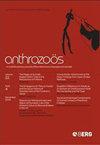A Survey of Factors That Influence Affinity With Dogs for People With Autism
IF 2.3
2区 农林科学
Q2 SOCIOLOGY
引用次数: 0
Abstract
Affinity with dogs has been defined as the degree to which people value interactions with dogs; it may be influenced by individual preferences, experiences with animals, and characteristics of the dog. To date, however, there has been limited investigation regarding factors that influence dog affinity for people with autism. An anonymous online survey was used in this study; it included demographic questions; exploration of experiences with animals; attitudes, preferences, likes, and dislikes of dogs; and the perceived impact of dogs on the person with autism’s social and community participation. The survey was distributed via social media channels, assistance dog organizations, and a disability provider to people living in Australia (n = 131) who were (1) an adult with a diagnosis of autism or (2) a next-of-kin of a person of any age with autism (completing the survey on behalf of their family member). Data were analyzed using descriptive and inferential statistics and content analysis. There were no significant differences in levels of affinity between children and adults with autism. However, findings indicated significant differences in levels of affinity between participants with and without a dog. Text entry responses to questions provided additional insights into participants’ attitudes and sensory preferences toward dogs, suggesting that affinity with dogs can be influenced by personal, disability-related, environmental, and animal-related factors. An awareness and consideration of these factors is essential for individuals with autism, their families, and service providers – including animal-assisted therapy or assistance animal organizations – when considering individual participation goals and determining if animal supports are the most appropriate option. Without an awareness and understanding of these factors, this could limit the effectiveness of the human–animal interaction.影响自闭症患者对狗的亲和力的因素调查
对狗的亲和力被定义为人们重视与狗互动的程度;这可能受到个人偏好、与动物相处的经验和狗的特点的影响。然而,迄今为止,关于影响自闭症患者对狗的亲和力的因素的调查有限。本研究采用匿名在线调查;它包括人口问题;探索与动物相处的经验;对狗的态度、偏好、喜恶;以及狗对自闭症患者社交和社区参与的感知影响。该调查通过社交媒体渠道、援助犬组织和残疾提供者向居住在澳大利亚的人(n = 131)分发,这些人是(1)被诊断为自闭症的成年人,或(2)任何年龄的自闭症患者的近亲(代表其家庭成员完成调查)。数据分析采用描述性统计、推理统计和内容分析。自闭症儿童和成人的亲和程度没有显著差异。然而,研究结果表明,有狗和没有狗的参与者之间的亲和力水平有显著差异。对问题的文本输入回答提供了参与者对狗的态度和感官偏好的额外见解,表明与狗的亲和力可能受到个人、残疾、环境和动物相关因素的影响。在考虑个人参与目标和确定动物支持是否是最合适的选择时,对这些因素的认识和考虑对自闭症患者、他们的家庭和服务提供者(包括动物辅助治疗或援助动物组织)至关重要。如果没有对这些因素的认识和理解,这可能会限制人与动物互动的有效性。
本文章由计算机程序翻译,如有差异,请以英文原文为准。
求助全文
约1分钟内获得全文
求助全文
来源期刊

Anthrozoos
农林科学-兽医学
CiteScore
3.40
自引率
18.80%
发文量
43
审稿时长
>36 weeks
期刊介绍:
A vital forum for academic dialogue on human-animal relations, Anthrozoös is a quarterly, peer-reviewed journal that has enjoyed a distinguished history as a pioneer in the field since its launch in 1987. The key premise of Anthrozoös is to address the characteristics and consequences of interactions and relationships between people and non-human animals across areas as varied as anthropology, ethology, medicine, psychology, veterinary medicine and zoology. Articles therefore cover the full range of human–animal relations, from their treatment in the arts and humanities, through to behavioral, biological, social and health sciences.
 求助内容:
求助内容: 应助结果提醒方式:
应助结果提醒方式:


